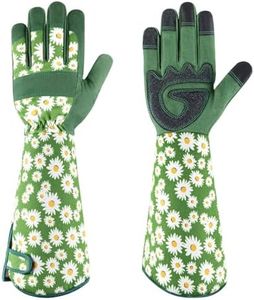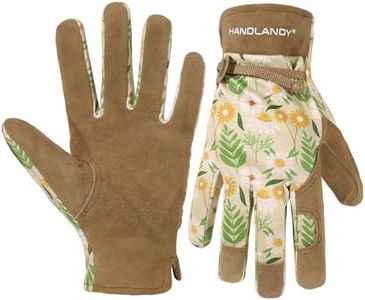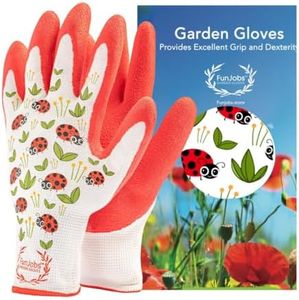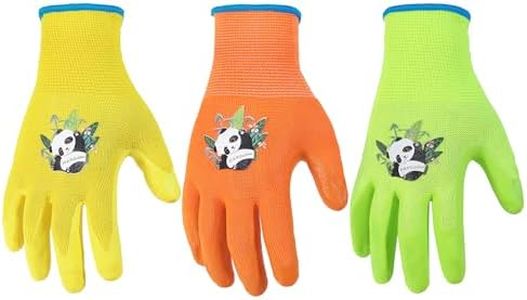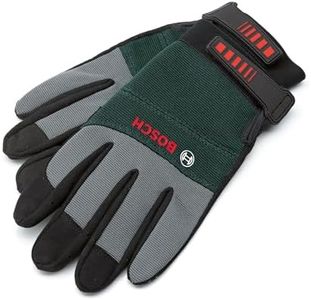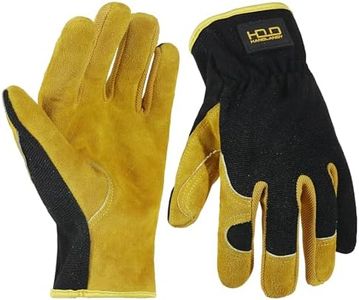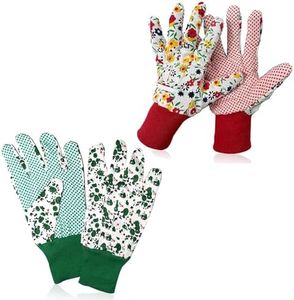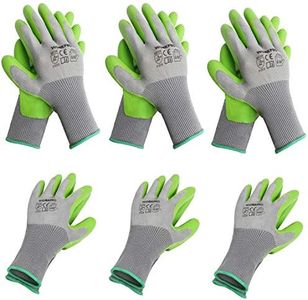We Use CookiesWe use cookies to enhance the security, performance,
functionality and for analytical and promotional activities. By continuing to browse this site you
are agreeing to our privacy policy
10 Best Gardening Gloves
From leading brands and best sellers available on the web.Buying Guide for the Best Gardening Gloves
Choosing the right gardening gloves can make your gardening experience much more comfortable and productive. The best gardening gloves protect your hands from dirt, thorns, and rough materials, while still giving you the dexterity you need to handle seeds, plants, and tools. To find the perfect pair, it's important to understand the key features and specifications that set gloves apart for different gardening tasks.MaterialThe material a glove is made from affects its durability, flexibility, and protection level. Common materials include leather, cotton, rubber, and synthetic blends. Leather gloves are tough and great for thorny plants, while cotton is lightweight and breathable for light work. Rubber and synthetic gloves provide water resistance and are easy to clean. Think about what type of gardening you do most; heavy-duty tasks may need stronger materials, while light planting may only require something soft and flexible.
Fit and SizeA good fit ensures comfort and full control during gardening. Gloves that are too tight can restrict movement and cause discomfort, while loose gloves may slip off or reduce your ability to handle small objects. Sizing generally ranges from small to extra-large, and some gloves have adjustable straps. To choose the right fit, try on gloves if possible and make sure you can flex your fingers easily and grasp tools securely.
GripThe grip of a glove is determined by the material and texture on the palm and fingers. Some gloves have rubberized or textured surfaces that help you hold tools and slippery objects. Others may be smooth, which can make handling wet or heavy items more difficult. If you do a lot of digging, pruning, or handling of slick tools, a glove with enhanced grip will serve you best.
Protection LevelThis refers to how well the glove can shield your hands from thorns, cuts, chemicals, and other potential hazards. Heavy-duty and leather gloves offer the best protection for tough jobs like handling rose bushes or brambles, while lighter gloves suffice for general weeding and planting. If you often work with prickly plants or rough materials, prioritize gloves with thick, reinforced surfaces.
BreathabilityBreathability means how well the glove allows air to pass through, which keeps your hands from getting sweaty. Cotton gloves and certain mesh-backed synthetic gloves are more breathable and comfortable for long periods, especially in hot weather. If you often spend hours gardening, a more breathable glove will help keep your hands dry and comfortable.
Water ResistanceWater resistance lets you handle wet soil or plants without getting your hands soaked. Rubber and some synthetic gloves keep water out, making them suitable for working with damp earth or after rain. If you mostly garden in dry conditions, water resistance may not be as important, but for wetter climates or tasks, prioritize this feature.
Ease of CleaningGloves get dirty easily when gardening, so the ability to wash them easily is important. Some gloves are machine-washable, while others can be simply rinsed off. For those who do a lot of dirty or muddy work, picking gloves that are simple to clean will save time and effort after each use.
